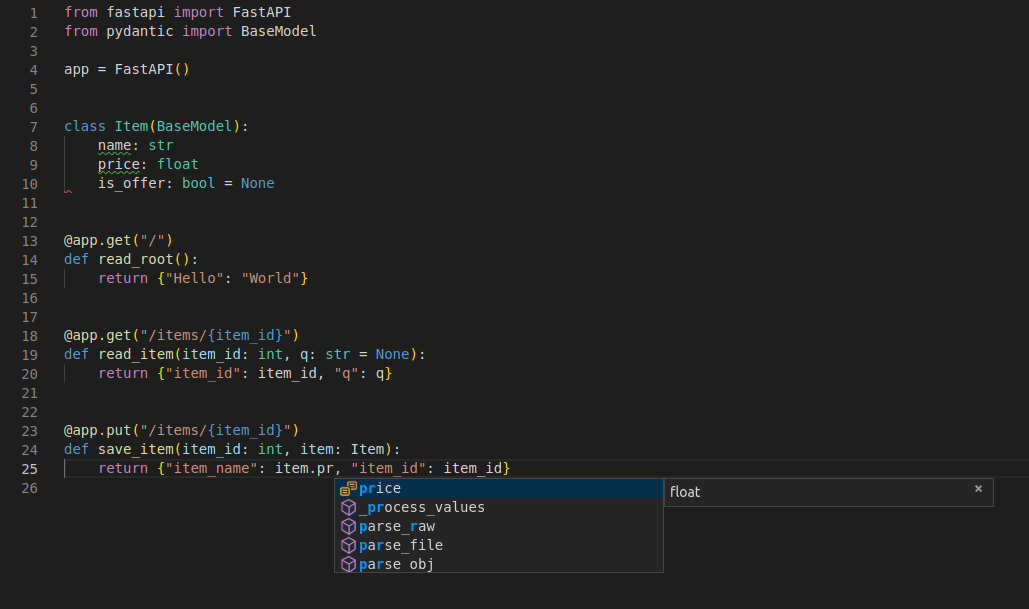- Sort Score
- Result 10 results
- Languages All
Results 11 - 20 of 23 for light (0.17 sec)
-
docs/en/docs/tutorial/security/first-steps.md
<img src="/img/tutorial/security/image01.png"> !!! check "Authorize button!" You already have a shiny new "Authorize" button. And your *path operation* has a little lock in the top-right corner that you can click. And if you click it, you have a little authorization form to type a `username` and `password` (and other optional fields): <img src="/img/tutorial/security/image02.png"> !!! note
Registered: Mon Jun 17 08:32:26 UTC 2024 - Last Modified: Mon Jun 03 01:48:20 UTC 2024 - 9.1K bytes - Viewed (0) -
docs/en/docs/css/termynal.css
content: 'bash'; position: absolute; color: var(--color-text-subtle); top: 5px; left: 0; width: 100%; text-align: center; } a[data-terminal-control] { text-align: right; display: block; color: #aebbff; } [data-ty] { display: block; line-height: 2; } [data-ty]:before { /* Set up defaults and ensure empty lines are displayed. */ content: '';
Registered: Mon Jun 17 08:32:26 UTC 2024 - Last Modified: Thu May 02 22:37:31 UTC 2024 - 2.2K bytes - Viewed (0) -
docs/en/docs/advanced/websockets.md
And to communicate using WebSockets with your backend you would probably use your frontend's utilities. Or you might have a native mobile application that communicates with your WebSocket backend directly, in native code. Or you might have any other way to communicate with the WebSocket endpoint. ---
Registered: Mon Jun 17 08:32:26 UTC 2024 - Last Modified: Thu May 02 22:37:31 UTC 2024 - 6.2K bytes - Viewed (0) -
docs/en/docs/features.md
The whole **FastAPI** framework is based to satisfy that. Autocompletion works everywhere. You will rarely need to come back to the docs. Here's how your editor might help you: * in <a href="https://code.visualstudio.com/" class="external-link" target="_blank">Visual Studio Code</a>: 
Registered: Mon Jun 17 08:32:26 UTC 2024 - Last Modified: Thu May 02 22:37:31 UTC 2024 - 9.3K bytes - Viewed (0) -
docs/en/docs/tutorial/dependencies/sub-dependencies.md
Just functions that look the same as the *path operation functions*. But still, it is very powerful, and allows you to declare arbitrarily deeply nested dependency "graphs" (trees). !!! tip All this might not seem as useful with these simple examples. But you will see how useful it is in the chapters about **security**.
Registered: Mon Jun 17 08:32:26 UTC 2024 - Last Modified: Sat May 18 23:43:13 UTC 2024 - 5.6K bytes - Viewed (0) -
docs/en/docs/tutorial/index.md
The **Advanced User Guide**, builds on this, uses the same concepts, and teaches you some extra features. But you should first read the **Tutorial - User Guide** (what you are reading right now).
Registered: Mon Jun 17 08:32:26 UTC 2024 - Last Modified: Thu May 02 22:37:31 UTC 2024 - 5.9K bytes - Viewed (0) -
docs/en/docs/how-to/nosql-databases-couchbase.md
The analogy in **MongoDB** would be a "collection". In the code, a `Bucket` represents the main entrypoint of communication with the database. This utility function will: * Connect to a **Couchbase** cluster (that might be a single machine). * Set defaults for timeouts. * Authenticate in the cluster. * Get a `Bucket` instance. * Set defaults for timeouts. * Return it. ```Python hl_lines="12-21"
Registered: Mon Jun 17 08:32:26 UTC 2024 - Last Modified: Sat May 18 23:43:13 UTC 2024 - 6K bytes - Viewed (0) -
docs/en/docs/advanced/additional-responses.md
# Additional Responses in OpenAPI !!! warning This is a rather advanced topic. If you are starting with **FastAPI**, you might not need this. You can declare additional responses, with additional status codes, media types, descriptions, etc. Those additional responses will be included in the OpenAPI schema, so they will also appear in the API docs.Registered: Mon Jun 17 08:32:26 UTC 2024 - Last Modified: Sat May 18 23:43:13 UTC 2024 - 8.8K bytes - Viewed (0) -
docs/en/docs/advanced/openapi-webhooks.md
This can make it a lot easier for your users to **implement their APIs** to receive your **webhook** requests, they might even be able to autogenerate some of their own API code. !!! info Webhooks are available in OpenAPI 3.1.0 and above, supported by FastAPI `0.99.0` and above. ## An app with webhooksRegistered: Mon Jun 17 08:32:26 UTC 2024 - Last Modified: Thu May 02 22:37:31 UTC 2024 - 2.8K bytes - Viewed (0) -
docs/en/docs/tutorial/testing.md
## Separating tests In a real application, you probably would have your tests in a different file. And your **FastAPI** application might also be composed of several files/modules, etc. ### **FastAPI** app file Let's say you have a file structure as described in [Bigger Applications](bigger-applications.md){.internal-link target=_blank}: ``` .
Registered: Mon Jun 17 08:32:26 UTC 2024 - Last Modified: Thu Apr 18 19:53:19 UTC 2024 - 6.2K bytes - Viewed (0)